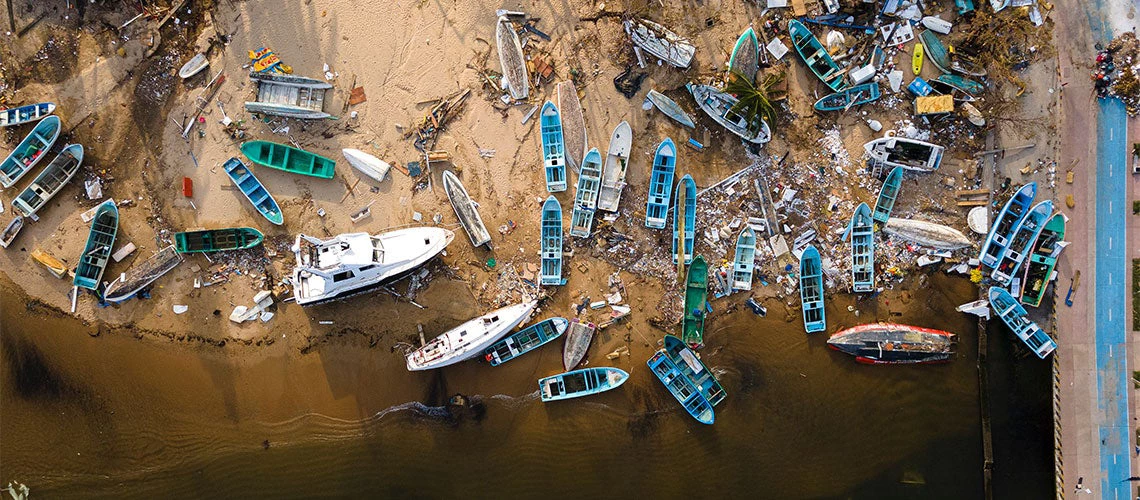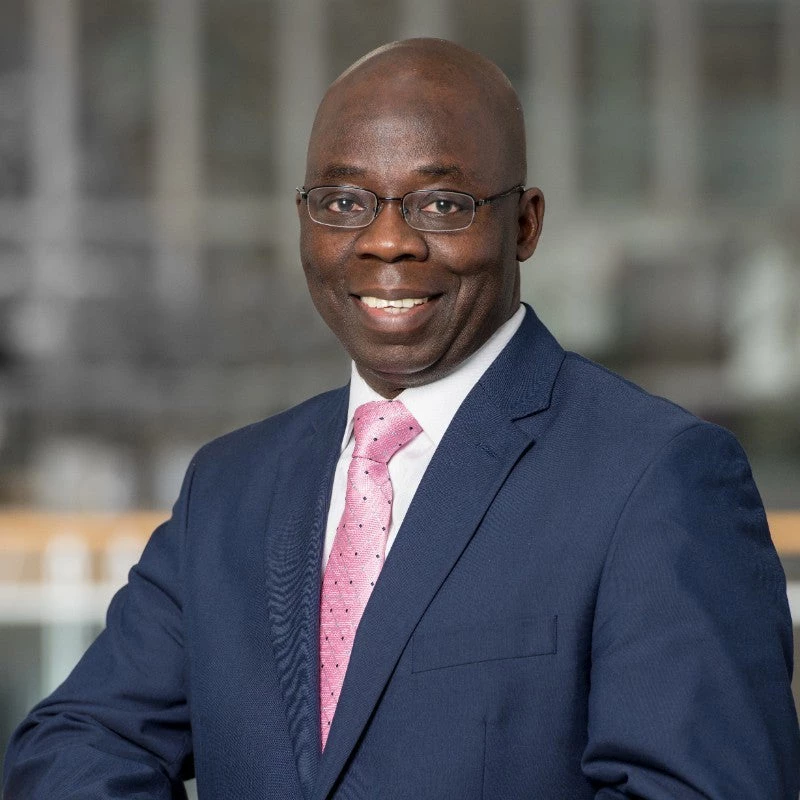 Playa Manzanillo en Acapulco México, a unos días del huracán Otis categoría 5. Imágen: Banco Mundial / AdobeStock.
Playa Manzanillo en Acapulco México, a unos días del huracán Otis categoría 5. Imágen: Banco Mundial / AdobeStock.
In late October 2023, the coastal city of Acapulco, Mexico, faced the devastating force of Hurricane Otis. The Category 5 storm wreaked havoc, leaving a trail of destruction in its wake. Sadly, the impact of the hurricane was not limited to physical damage; it also claimed casualties, adding a sad note to the city’s recovery efforts.
The aftermath of Hurricane Otis revealed the vulnerability of not only the city's infrastructure but also its economic pillars . The once-thriving tourist industry, a vital component of Acapulco's economy, took a severe hit. The storm disrupted tourism, affecting businesses, livelihoods, and the overall economic stability of the region.
As Acapulco embarks on the challenging journey of reconstruction, valuable lessons emerge—lessons that could shape a resilient and inclusive recovery for the city and beyond . Hurricane Otis caused widespread damage to buildings and infrastructure. The insurance industry estimates total insured losses at USD 2.5-6 billion, one of the costliest disasters in Mexico's history. However, this staggering figure fails to capture the broader, uninsured impacts on people's lives, especially those relying on low-wage employment in the tourism industry—an economic lifeline for Guerrero state, one of Mexico's poorest.
More than infrastructure: Restoring Acapulco’s livelihoods and communities
Acapulco's recovery depends on rebuilding but also involves the restoration of livelihoods and communities. Communities where over 100 000 people live in extreme poverty in the city, according to CONEVAL, an authority on Mexican social issues. This underscores the urgency for a comprehensive recovery strategy.
The decisions made in the coming weeks and months will shape not only the city's destiny but also the fortunes of the region. In Guerrero, the poverty rate is over 60 percent (among the highest in the country), and over a quarter of people live in inadequate housing. Around half of the state’s Gross Domestic Product (GDP) depends on Acapulco. This makes it vulnerable to climate shocks, exacerbated by the low coping capacity of its poorest people.
In the chaotic aftermath of a disaster, the immediate focus is understandably on saving lives. However, long-term planning at the early stage is critical to build back better. Drawing insights from a World Bank report, effective disaster recovery involves building back stronger, faster, and more inclusively .
- Building back stronger: Resilience is the key to future-proofing communities. It involves thoughtful design, strategic site selection, and high-build quality. Acapulco's reconstruction should withstand future disasters, learning from past events and future trends.
- Building back faster: Recovery efficiency is crucial. Establishing pre-arranged financing mechanisms and streamlined contracts with reconstruction suppliers can expedite the assessment and disbursement of funds, minimizing long-term impacts.
- Building back more inclusively: A resilient recovery ensures no one is left behind. Leveraging existing social safety nets and implementing financial preparedness measures can reduce impacts by one-third.
Building back stronger sounds like common sense and saves money over time, but it can involve up-front costs. Finding ways to subsidize these additional costs can help. In the 2017 Caribbean hurricane season, two category 5 hurricanes devastated Dominica, causing significant loss of lives and damaging 70-80 percent of buildings. With World Bank support, Dominica launched a reconstruction project to build resilient homes to withstand future storms and protect lives and livelihoods.
Building back more inclusively depends on measuring the well-being impacts of disasters on people, not just the aggregate loss of assets and productivity . Tourism is the second most important sector in Mexico for employment of women (58 percent) and for indigenous communities. A comprehensive recovery effort should define and address the needs of these employees, their businesses, and their families.
In a world where climate change poses increasing threats, Acapulco's reconstruction also presents an opportunity to build back greener. The city can optimize co-benefits and promote a more sustainable future by integrating environmentally sustainable practices into recovery efforts.
Lessons from past disasters in tourist areas
Tourism is a notoriously vulnerable sector. The COVID-19 pandemic revealed the industry’s global interconnectedness and vulnerability. Recently, wildfires in Maui reduced economic growth projections for Hawaii from 1.8 to 1.1 percent in 2023 (business and visitor spending losses alone are estimated at USD 11 million a day).
If managed right, the reestablishment of the tourism sector can be an effective way to reduce poverty and build resilience, as part of a comprehensive recovery plan. The devastation wrought by the Indian Ocean Tsunami in 2004, for example, emphasized the importance of sustainable coastal urban planning in tourist areas to attract visitors back and safeguard local jobs.
Acapulco can similarly build competitive advantage, by intelligently managing risks, supporting green local economies, and promoting responsible tourism for increasingly aware travelers. In this way, an ambitious recovery plan can seize the opportunity to recover the city as a sustainable tourism hub.
The World Bank’s resilient tourism framework provides a roadmap. From mitigating reputational risks to protecting jobs and firms through well-designed stimulus packages, including for women-led Small and Medium-Sized Enterprises, it outlines key considerations for building a resilient industry.
Rebuilding Acapulco after Hurricane Otis is a monumental task, but the lessons learned from disaster recovery and the unique challenges of the tourism sector provide a blueprint . By incorporating these lessons, Acapulco can emerge stronger, more inclusive, and better prepared for future uncertainties, and serve as a beacon of hope for disaster-prone regions worldwide.
Stay updated with our weekly article
Related articles:


Join the Conversation